There is a subtle difference between damp proofing and waterproofing although the general objective of both is to minimise the travel or passage of water through a material.
Property-owners face a lot of problems due to leakage of water/seepage/dampness in buildings soon after construction and during the life of buildings:
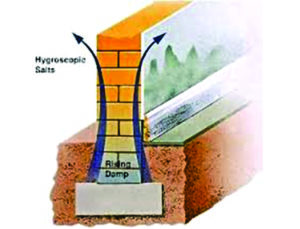
Dampness: This happens mainly on floors such as walls of ground floors or even higher level The main source of dampness in low-lying areas of a structure is moisture rising from ground/foundation /earth filling below the floors. It is also caused by not providing a proper damp proof course (DPC) at plinth level during construction and by defects in the construction of the DPC itself and the building’s foundation.
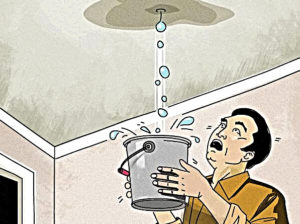
Leakage: Leakages most commonly occur in various wet areas of buildings (toilets, bathrooms, kitchen, roof, terrace, water supply and sanitary service installations, drainage and sewerage installations, overhead water tanks etc).
Seepage: One main source of seepage is leakages as stated above, but it also occurs from dampness formed by defective construction and the materials of the external walls of a building.
Although the literary meaning of both damp proofing and waterproofing sounds the same there are, however, definite ways of distinguishing between the two subjects and how to treat it. These depend on:
- Form of moisture;
- The methods used to treat it – which differs in terms of materials used;
- Thickness of the preventive layers applied; and
- Methods of applying the layers.
Waterproofing is a treatment of a surface or structure to resist the passage of water under hydrostatic pressure, whereas damp proofing is the treatment of a surface or structure to resist the passage of water in the absence of hydrostatic pressure.
Damp proofing is intended to keep out soil moisture, while waterproofing keeps out both moisture (including water vapor) and liquid water.
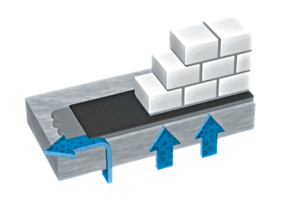
The purpose of a damp course treatment is to prevent rising dampness from the sub-soil or foundation reaching the brick masonry at the plinth level. It has one main purpose: stopping the transference of ground moisture through masonry or concrete. Damp proofing is not intended to keep all water and moisture out, but rather retard moisture infiltration by blocking the capillaries of concrete or masonry, which slows water penetration.
Another major misconception about damp proofing is that it does not seal larger cracks, big holes, or any other damaged surface.
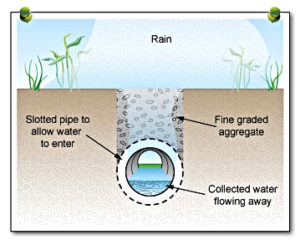
The damp proof treatments must be preceded by collateral measures of sub-soil water collecting systems, proper construction of rainwater collection and disposal systems and impervious plinth protection all around the structure.
Therefore, if you combine damp proofing with an adequate and properly installed drainage system leading to absence of hydrostatic pressure, you will be able to provide your home or building with long-lasting moisture protection.
Waterproofing a building is a process that was specifically designed to properly stop the infiltration of water through concrete structures. Many designers simply forget about providing protection against water penetration.
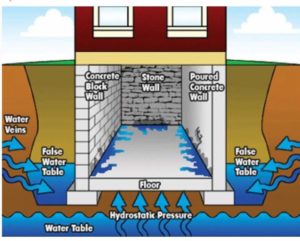
Waterproofing materials that are utilised in this process can bridge and seal cracks and gaps due to their elastic, flexible nature and the thickness of the applied coating. Waterproofing materials also are designed to withstand hydrostatic pressure as well as moisture often over 40 mm – whereas damp proofing materials are unable to do this.
Waterproofing is essential for all homes and buildings – and it should include treatment to the roof and other parts of the structure to prevent damage.
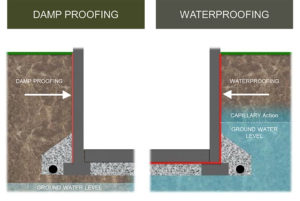
It is especially essential in areas where there are significant rain and high-water tables or a building is near water bodies like a lake, river etc. As water enters the ground, it collects around the foundation and the higher the water rises from the foundation, the greater the hydrostatic pressure exerted against the concrete or masonry surface. This is especially true in areas with clay soils, as clay will absorb and hold more water than granular soil. This hydrostatic pressure forces water through porous concrete/masonry.
Therefore, the sub-grade depth of the concrete structure, the degree of inherent hydrostatic pressure in the area, and the use of the interior space are important criteria to consider when determining whether damp proofing or waterproofing is appropriate.
a.b.e.® started operations in 1939 and has now supplied waterproofing products for 81 years to the building, civil engineering and building maintenance industries, and also directly to customers through builders’ merchants and hardware stores. When deciding on waterproofing, trust the experts and do it the a.b.e.® way!

